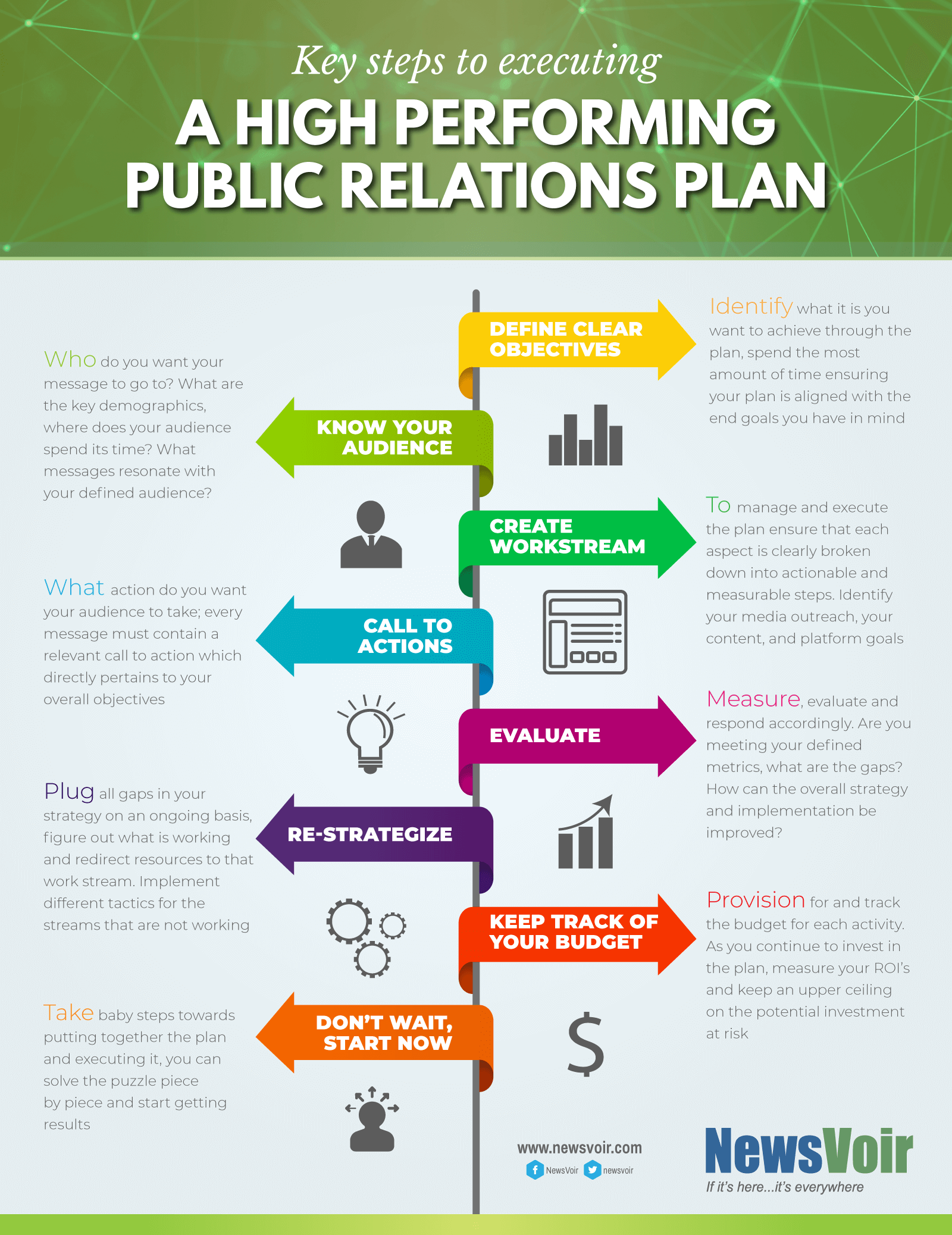Mastering Public Relations: Setting Effective Goals And Objectives
In today’s competitive business landscape, public relations (PR) plays a pivotal role in shaping an organization’s reputation, building relationships, and driving success. However, without clear goals and objectives, PR efforts can become scattered and ineffective. This guide will delve into the essential steps involved in setting effective PR goals and objectives to maximize the impact of your campaigns.
Identifying the Pain Points
The initial step in setting PR goals is to identify the areas where your organization faces challenges or has opportunities for improvement. Conduct a thorough analysis of your current PR efforts, strengths, and weaknesses. Consider factors such as brand perception, media coverage, stakeholder engagement, and industry trends.

Por Que Definir Metas É Importante – Source pdf.wondershare.com.br
Defining Clear and Specific Objectives
Once you have identified the pain points, it’s crucial to establish clear and specific PR objectives. These objectives should be aligned with your overall business goals and measurable, so you can track progress and evaluate the effectiveness of your PR efforts. For instance, you could aim to increase positive media coverage by 20%, enhance brand awareness among key stakeholders, or generate a specific number of qualified leads through PR initiatives.

Music production & composition, mixdown, mastering & public relations – Source wayfareraudio.com
SMART Goals: A Framework for Success
When setting PR goals, it’s helpful to follow the SMART framework to ensure they are specific, measurable, achievable, relevant, and time-bound. This framework provides a solid foundation for defining objectives that are clear, focused, and actionable. By adhering to SMART principles, you can increase the likelihood of achieving your PR goals.

Title: Mastering Success: A Comprehensive Guide to Setting Effective – Source medium.com
Setting Effective PR Goals: A Personal Experience
In my previous role as a PR manager for a technology company, we encountered a significant challenge in building awareness for our new product launch. We realized that our messaging was not resonating with our target audience. By setting clear PR goals to increase product awareness by 30% within six months, we were able to develop a targeted PR strategy that included media outreach, content marketing, and influencer partnerships. By regularly tracking our progress and making adjustments along the way, we successfully exceeded our goal and generated substantial buzz for our product launch.

38 Examples of SMART Goals for Students (2022) (2022) – Source smartdataweek.com
Understanding the History and Myths of PR Goals
PR goals have evolved over time, influenced by changes in media consumption, technology, and business practices. In the past, PR focused primarily on securing positive media coverage. However, today’s PR professionals recognize the importance of building relationships, engaging stakeholders, and driving measurable business outcomes. It’s crucial to dispel common myths surrounding PR goals, such as the belief that PR is solely about media relations or that it’s a quick fix for business problems.

Key Steps To Executing A High Performing Public Relations Plan – Source www.newsvoir.com
Uncovering the Hidden Secrets of PR Goals
Setting effective PR goals requires understanding the hidden secrets that can make or break your campaigns. One key secret is to align your PR goals with your overall business objectives. By doing so, you ensure that your PR efforts contribute directly to the growth and success of your organization. Another hidden secret is to leverage data and analytics to track your progress and make informed decisions. By measuring the impact of your PR campaigns, you can identify what’s working and what needs improvement.

How To Set Goals as a Team: Steps and Examples | Indeed.com – Source www.indeed.com
Recommended Practices for Setting PR Goals
To achieve optimal results, it’s essential to follow recommended practices for setting PR goals. First, involve key stakeholders in the goal-setting process to gain their input and ensure alignment. Second, prioritize your goals based on importance and feasibility. By focusing on a few key objectives, you can increase the likelihood of success. Finally, regularly communicate your PR goals to your team to ensure everyone is working towards the same targets.

Effective Public Speaking Skills – ASM Learning – Source www.asmlearning.com
Mastering Public Relations: A Comprehensive Guide
To delve deeper into the intricacies of mastering public relations and setting effective goals, consider investing in a comprehensive guide or course. These resources provide valuable insights, case studies, and practical tips that can help you develop a robust PR strategy and achieve your communication objectives.

Mastering Public Relations Strategies – AJPO Journals – Source ajpojournals.org
Tips for Maximizing Your PR Goals
To maximize the impact of your PR goals, adopt these proven tips. First, set ambitious yet realistic goals. Avoid setting goals that are too easy or impossible to achieve. Second, break down your goals into smaller, manageable steps. By doing so, you can create a roadmap for achieving your objectives. Finally, stay flexible and adapt your goals as needed based on changing circumstances or new insights.
Mastering Public Relations: A Step-by-Step Process
Mastering public relations and setting effective goals is a step-by-step process. By following the principles outlined in this guide, you can develop a PR strategy that aligns with your business objectives, resonates with your target audience, and drives measurable results. Remember, PR is an ongoing process, and by continuously refining your goals and evaluating your progress, you can maximize the impact of your PR efforts.
Fun Facts about PR Goals
Did you know that the first public relations agency was founded in 1900 by Ivy Lee? Or that the term “public relations” was coined in 1923 by Edward Bernays? These fun facts highlight the rich history and evolution of PR. Understanding the origins and principles of PR can help you appreciate the importance of setting effective goals and objectives.
How to Master Public Relations: A Guide for Beginners
If you’re new to public relations, don’t be overwhelmed. Mastering PR is a journey that requires dedication, learning, and practice. Start by understanding the fundamentals of PR, including media relations, crisis communication, and stakeholder engagement. Then, set clear goals and objectives for your PR efforts, and develop a comprehensive strategy to achieve them. Stay up-to-date with industry trends, attend PR events, and network with other professionals to expand your knowledge and skills.
What if I Can’t Achieve My PR Goals?
If you’re struggling to achieve your PR goals, don’t give up. Re-evaluate your goals to ensure they are realistic and aligned with your resources. Analyze your strategies and tactics, and make adjustments as needed. Seek feedback from colleagues, mentors, or industry experts to gain fresh perspectives. Remember, PR is an iterative process, and success often requires persistence and a willingness to learn and adapt.
Listicle: Essential Elements of PR Goals
Here’s a listicle of essential elements to consider when setting PR goals:
- Alignment with business objectives
- Measurable and quantifiable
- Specific and targeted
- Time-bound and realistic
- Aligned with audience and stakeholders
- Data-driven and adaptable
- Communicated effectively to team
Question and Answer
Q: Why is it important to set clear PR goals and objectives?
A: Clear goals and objectives provide direction, focus, and measurability for your PR efforts, ensuring alignment with your organization’s overall business goals.
Q: What is the SMART framework, and how can it be applied to PR goal setting?
A: The SMART framework stands for specific, measurable, achievable, relevant, and time-bound. By applying this framework, you can ensure that your PR goals are well-defined, quantifiable, and aligned with your resources and timeframe.
Q: How can I track the progress of my PR goals?
A: Utilize analytics tools, media monitoring platforms, and regular performance reviews to measure key metrics and KPIs. This data will help you assess the effectiveness of your PR campaigns and make data-driven adjustments.
Q: What should I do if I’m struggling to achieve my PR goals?
A: Re-evaluate your goals to ensure they are realistic and aligned with your resources. Analyze your strategies and tactics, and make adjustments as needed. Seek feedback from colleagues, mentors, or industry experts to gain fresh perspectives and identify areas for improvement.
Conclusion of Mastering Public Relations: Setting Effective Goals And Objectives
Mastering public relations and setting effective goals and objectives is essential for driving successful communication campaigns. By following the principles outlined in this guide, you can develop a PR strategy that aligns with your business objectives, resonates with your target audience, and achieves measurable results. Remember, PR is an ongoing process, and by continuously refining your goals and evaluating your progress, you can maximize the impact of your PR efforts and contribute to the long-term success of your organization.
![Crisis Averted: [Company Name] Responds Swiftly To Address [Issue Name] Crisis Averted: [Company Name] Responds Swiftly To Address [Issue Name]](https://s3.castbox.fm/b9/32/14/4859554072ac1afe4465dd35a3.jpg)
